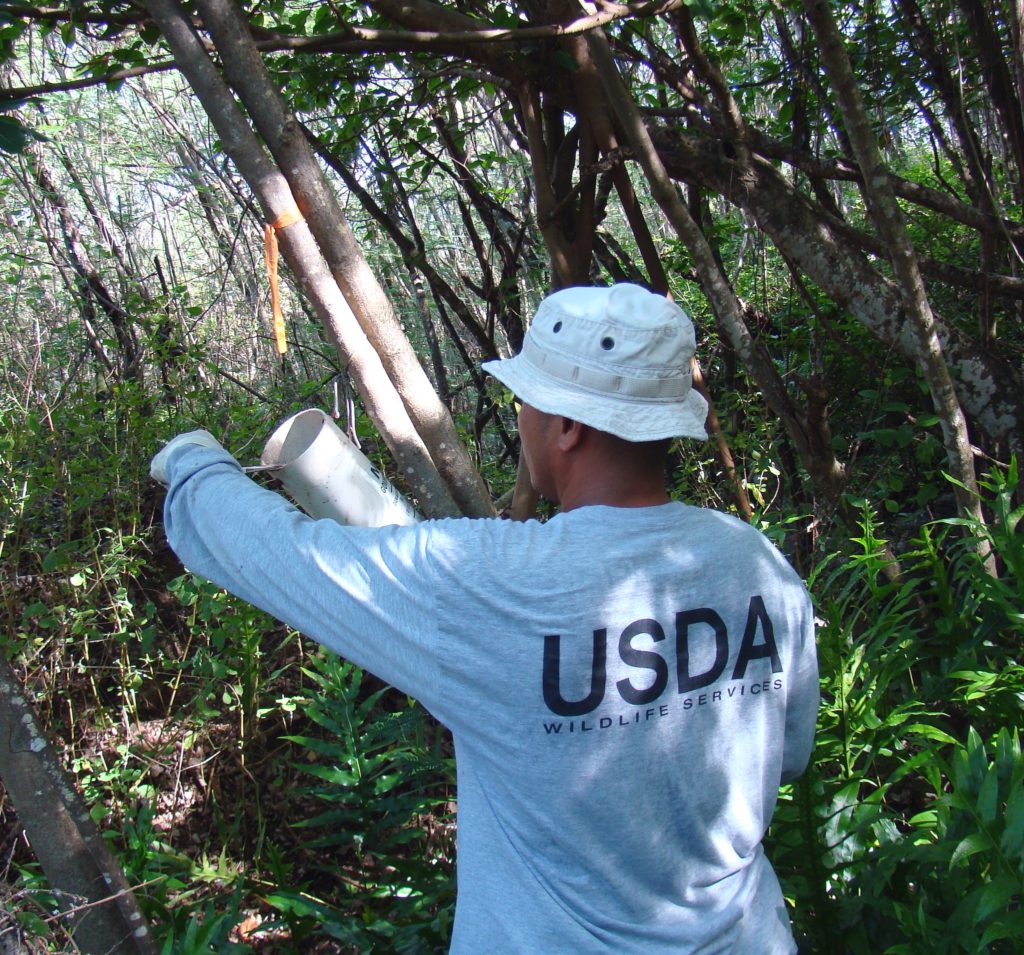The Trump administration announced yesterday it will reauthorize the use of sodium cyanide in wildlife-killing devices called M-44s, rejecting overwhelming public support for a nationwide ban. These “cyanide bombs” have received approval—with minimal restrictions—from the Environmental Protection Agency (EPA) despite inhumanely and indiscriminately killing thousands of animals each year. These devices have also seriously injured people.
“The EPA’s minor revisions do little to reduce the risks sodium cyanide bombs pose to people, fail entirely to address risks to wildlife, including endangered species, and make clear the agency is prioritizing livestock interests over human safety and the environment,” said Cathy Liss, president of the Animal Welfare Institute. “The simple solution to preventing further tragedies caused by these inherently dangerous devices is a nationwide ban.”
The EPA allows use of the devices by Wildlife Services, the animal-killing program of the U.S. Department of Agriculture (USDA). The EPA also authorizes M-44s to be used by state agencies in South Dakota, Montana, Wyoming, New Mexico, and Texas.
In August, the EPA issued an interim decision renewing sodium cyanide registration. One week later, the agency withdrew that decision to engage in more discussions with Wildlife Services. Today’s announcement again reauthorizes use of the devices.
Earlier this year, more than 99.9 percent of people commenting on the proposal asked the EPA to ban M-44s, according to an analysis conducted by the Center for Biological Diversity and Western Environmental Law Center.

In response to concerns raised by the wildlife advocacy groups and others, the EPA added some modest restrictions. For example, the devices cannot be placed within 300 feet—up from 100 feet—of a public road or pathway. Two elevated warning signs must be placed within 15 feet—down from 25 feet—of each device. And no devices can be placed within 600 feet of a residence unless the landowner gives permission.
None of the restrictions will prevent the killing of nontarget wildlife, however.
“While it is encouraging that the EPA is taking at least some minimal action to protect the public from deadly M-44s, updating a few use restrictions—nearly impossible to enforce and commonly ignored—fails to meaningfully address the problem,” said Kelly Nokes, Shared Earth wildlife attorney with the Western Environmental Law Center. “The EPA is blatantly ignoring its fundamental duty to protect the public, our pets, and native wildlife from the cruel, lethal impacts of cyanide bombs lurking on our public lands. We will continue to hold our federal government accountable to the law and will continue our fight for a ban on M-44s once and for all.”

“Tightening up use restrictions is turning a blind eye to the reality of M-44s,” added Brooks Fahy, executive director of Predator Defense. “In my 25 years working with M-44 victims, I’ve learned that Wildlife Services’ agents frequently do not follow the use restrictions. And warning signs will not prevent more dogs, wild animals, and potentially children from being killed. They cannot read them. M-44s are a safety menace and must be banned.”
According to Wildlife Services’ own data, last year M-44s killed 6,579 animals, mostly coyotes and foxes; in 2017, at least 13,232 animals were killed. Of the 2017 deaths, more than 200 were nontarget animals, including foxes, opossums, raccoons, skunks, and a bear. Most likely, these numbers significantly underestimate the true death toll, since Wildlife Services is notorious for poor data collection and an entrenched mentality that emphasizes lethal methods of wildlife management.
Background
M-44s spray deadly sodium cyanide into the mouths of unsuspecting coyotes, foxes, and other carnivores lured by smelly bait. Any animal or person who pulls on the baited M-44 device can be killed or severely injured by the spray.
M-44s temporarily blinded a child and killed three family dogs in two incidents in Idaho and Wyoming in 2017. A wolf was also accidentally killed by an M-44 set in Oregon that year. In response, Idaho instituted an ongoing moratorium on M-44 use on public lands, and Oregon this year passed legislation banning them in the state.
In response to a 2017 lawsuit brought by the Center for Biological Diversity and its allies, the U.S. Fish and Wildlife Service agreed to analyze impacts of M-44s on endangered wildlife by the end of 2021. Another 2017 lawsuit by wildlife advocates prompted Colorado Wildlife Serves to temporarily halt the use of M-44s while the agency completes a new environmental analysis on its wildlife-killing program.
Last year, the EPA denied a 2017 petition authored by the Center for Biological Diversity and WildEarth Guardians that asked for a nationwide ban on M-44s.
Featured image: a coyote, one of the common species killed by M-44 devices. Image credit Tjflex2, CC BY-SA 2.0.





